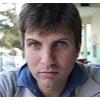Tese de Doutoramento
Bioengineering strategies towards the in vitro fabrication of hierarchical and biomimetic cartilage constructs
— 2019
Informações chave
Autores:
Orientadores:
Publicado em
09/27/2019
Resumo
Cartilage regeneration upon injury or joint disease remains a challenge mainly due to its intrinsic avascular nature, low cellularity and highly complex multizonal architecture. Cartilage tissue engineering (CTE) approaches combining cells, biomaterial matrices and biochemical/physical stimuli aim to generate tissue substitutes with native-like properties and long-term functionality. However, despite the existence of studies with promising results, fully functional cartilage constructs with physiologic structural and biomechanical properties are yet to be achieved, which has limited their clinical translation. The main objective of this thesis was to contribute towards the development of novel bioengineering strategies for the in vitro fabrication of native-like cartilage tissue through a closer mimicry of some of its specific biochemical/physical, structural and mechanical features. The glycosaminoglican (GAG) composition of the main cells used for CTE (chondrocytes and bone marrow/synovium-derived mesenchymal stem/stromal cellshBMSC/ hSMSC), their cell-secreted extracellular matrix (ECM), and of the respective chondrogenic aggregates generated under normoxic (21% O2) / hypoxic (5% O2) conditions was determined using highly sensitive mass spectrometry techniques. It is noteworthy that external supplementation with main cartilage GAGs, particularly, chondroitin sulfate (CS) and hyaluronic acid (HA), showed favorable effects in the MSC chondrogenic differentiation on porous biodegradable scaffolds. Additive manufacturing technology was employed to fabricate a customizable perfusion bioreactor able to provide fluid-induced shear stress stimuli to MSC-based cartilage constructs, which resulted in enhanced chondrogenesis and reduced hypertrophy. Different scaffold structures, namely 3D MSC-ECM decoratedscaffolds and kartogenin-loaded coaxial electrospun nanofibers were developed to target the regeneration of specific zonal regions within the osteochondral tissue. Finally, we introduced the concept of a tri-layered hierarchical scaffold to mimic the architecture of different articular cartilage zones (3D porous polycaprolactone (PCL) scaffold as deep zone layer, a GAGbased hydrogel in the middle zone and aligned PCL/Gelatin nanofibers as superficial zone layer) and its ability to support the chondrogenic differentiation of MSC was evaluated. Such biomimetic scaffolds provide a closer mimicry of the complex structure of articular cartilage and are promising for the repair of full-thickness cartilage defects and as more reliable in vitro models for research and drug screening.
Detalhes da publicação
Autores da comunidade :
João Carlos Fernandes da Silva
ist165105
Orientadores desta instituição:
Frederico Castelo Alves Ferreira
ist24812
RENATES TID
101472510
Designação
Doutoramento em Bioengenharia
Domínio Científico (FOS)
industrial-biotechnology - Biotecnologia Industrial
Idioma da publicação (código ISO)
eng - Inglês
Acesso à publicação:
Embargo levantado
Data do fim do embargo:
07/07/2020
Nome da instituição
Instituto Superior Técnico

